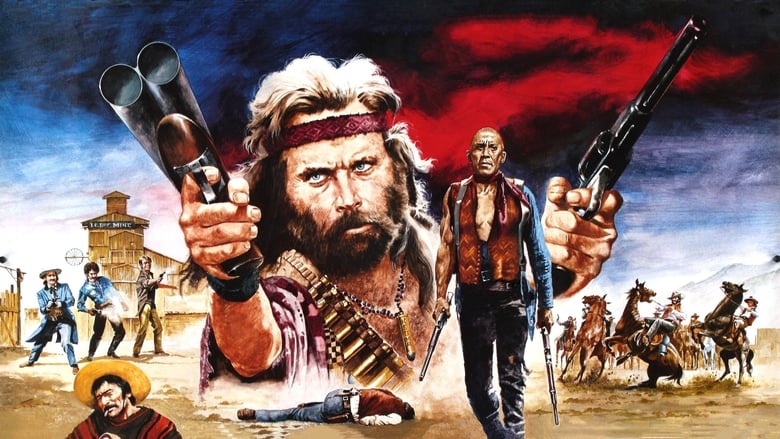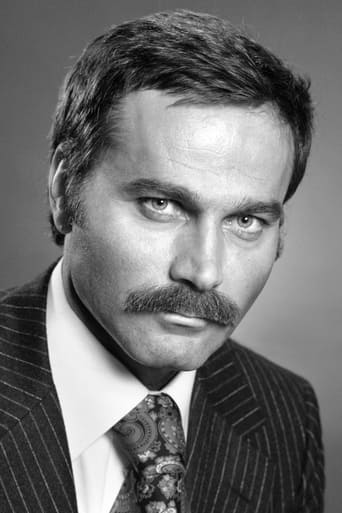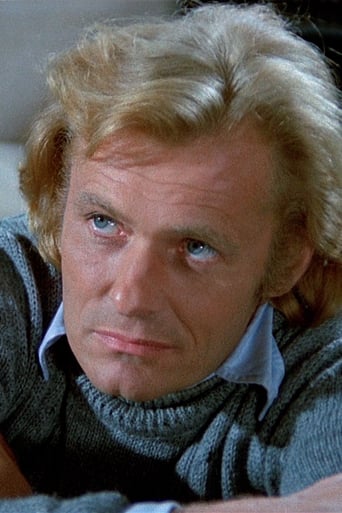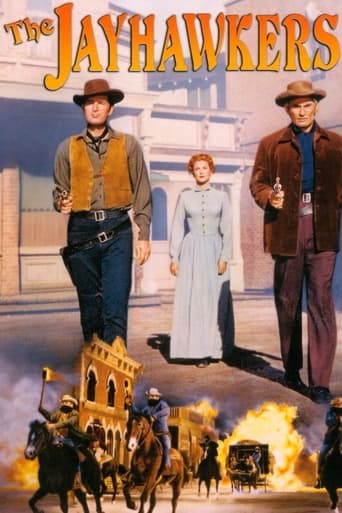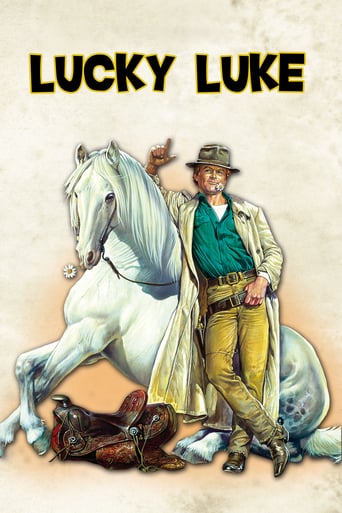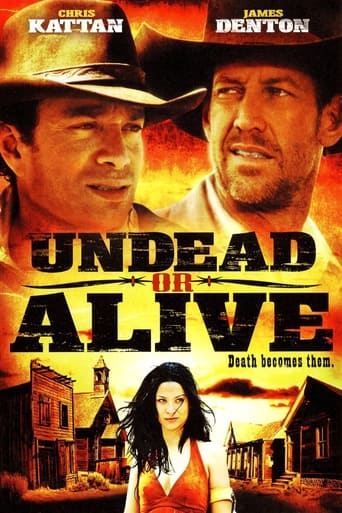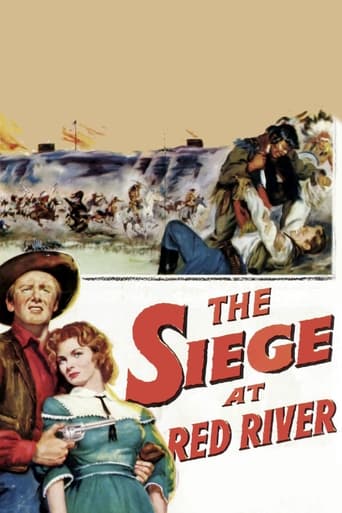Keoma (1977)
Half-breed Keoma returns to his border hometown after service in the Civil War and finds it under the control of Caldwell, an ex-Confederate raider, and his vicious gang of thugs. To make matters worse, Keoma's three half-brothers have joined forces with Caldwell, and make it painfully clear that his return is an unwelcome one. Determined to break Caldwell and his brothers' grip on the town, Keoma partners with his father's former ranch hand to exact violent revenge.
Watch Trailer
Cast


Similar titles
Reviews
For all the hype it got I was expecting a lot more!
Don't listen to the negative reviews
Fun premise, good actors, bad writing. This film seemed to have potential at the beginning but it quickly devolves into a trite action film. Ultimately it's very boring.
I enjoyed watching this film and would recommend other to give it a try , (as I am) but this movie, although enjoyable to watch due to the better than average acting fails to add anything new to its storyline that is all too familiar to these types of movies.
A half-breed ex-Union gunfighter (Franco Nero) attempts to protect his plague-ridden hometown from being overridden by his racist half-brothers and a Confederate tyrant (Donald O'Brien).While participating in the filming of "21 Hours at Munich", Franco Nero was approached by his longtime friend and collaborator Enzo G. Castellari and producer Malono Bolognini on the proposition of appearing in a Spaghetti Western, despite dwindling demand for films of that genre. The original treatment was written by actor George Eastman and developed into a script by Mino Roli and Nico Ducci, neither of whom were experienced writers of Spaghetti Westerns.This ends up being one of the better latter-day spaghetti westerns, with great slow-motion fights, horses falling and everything that should be in a big budget western. There is a great examination of race -- both native Americans and more -- that is honest and fair. The one big down side, as others have pointed out, is the awful soundtrack. The score is alright, but every time someone sings it is just atrocious.
"Any Gun Can Play" director Enzo G. Castellari surpassed himself with his contemplative but entertaining Spaghetti western "Keoma" with Franco Nero, William Berger, Donald O'Brien, Olga Karlatos, and Woody Strode. Although Castellari stages several body-twirling shootouts, this oater differs considerably from most European westerns because it explores meaningful questions that we all have considered about life. Essentially, this exercise in existentialism follows the eponymous hero, Keoma (Franco Nero of "Django"), as he struggles to learn who he is and where wants to go in his life. Few Spaghetti westerns aspire to venture into such uncharacteristic territory, but Castellari does so without turning his horse opera into a painfully obvious psychological journey of hardship. Our protagonist is a half-breed Indian who was adopted as a stepchild and spent his entire childhood contending with his jealous brothers for the approval of their father, William Shannon (William Berger of "Sabata"), who lavished love and attention on Keoma. Eventually, Keoma grew up and went off to fight in the American Civil War. Castellari doesn't recreate the war, but it figures prominently in the plot, especially where an African-American role model, George (Woody Strode of "Boot Hill"), is concerned. When Keoma returns from the war to his hometown, he finds things have undergone drastic changes. His father is no longer the high honcho, and his three jealous stepbrothers have hired their guns out to a former Confederate soldier, Caldwell (Donald O'Brien of "Grand Prix"), who has taken over the town, operated the mine in it, and runs it now with an iron hand. Moreover, a mysterious plague has infected the town. Occasionally, Caldwell's vicious gunslingers send citizens into exile whether or not they suffer from the disease to live with others in a forted up compound guarded by his men. When the action unfolds, a group of plague-ridden men try to escape from these gunslingers but they are mowed down with ruthless abandon. Castellari shoots these killings like Sam Peckinpah might have with the dying men leaping and lunging in slow motion. One of the escapees who dies futilely in his bid for for freedom arranged this distraction so his pregnant wife, Liza Farrow (Olga Karlatos of "Zombie") could escape. Later, Keoma stumbles onto this unfortunate lady and takes her into town where he secures a room for her. Liza lugs around her child during the film and gives birth in the final five minutes when Keoma settles accounts with his rival stepbrothers. One of the narrative effects that you rarely see in Spaghetti westerns is Keoma's flashbacks to his youth when his stepbrothers picked on him. The adult Keoma watches these former exploits as if he as an adult were there when they occurred. In the middle of an otherwise traditional western, we are treated to something that is clearly postmodern. Typically, this would have occurred in a separate flashback without the adult Keoma observing it. Similarly, the deployment of the pregnant woman represents another attempt at symbolism that seems out of place for a Spaghetti western bloodbath. Fans of the genre need not despair about this offbeat symbolism. An elderly witch who trundles a cart filled with garbage appears now and again and offers comments about Keoma and his past. Her presence seems heavily symbolic, like something you would expect from an Ingmar Bergman movie. Meantime, Keoma displays his impeccable marksmanship, dispatching Caldwell's odious henchmen without a qualm. Keoma, his father, and George form an alliance to combat the evil Caldwell who refuses to let the local physician distribute medicine to deal with the plague outbreak. Aiace Parolin's widescreen cinematography looks fantastic from the very first image that isolates Keoma in the doorway of a darkened house to the fluid camera movements that recur throughout the action. Carlo Simi's art direction and production designs contribute to the beauty and atmosphere of "Keoma." Like most westerns where the hero constitutes a kind of messiah, Keoma is strung up on the giant wheel of mining machinery for all of the town citizens to see. Ultimately, "Keoma" isn't a run-of-the-mill Spaghetti western and Castellari's horse opera came out during the twilight period when foreign westerns were gradually disappearing. Although Nero is part Indian and part white, he looks more like a hippie with his long hair and Native America outfit. He carries a sawed off double-barreled shotgun like he did in his "Django" sequel. This is an above-average, pretentious, but interesting Castellari western with strong performances, especially by Strode.
"Keoma: The Avenger" (1976), is a Spaghetti Western directed by Enzo G. Castellari (who would late make the 1976 film "Inglorious Bastards", a film that Quentin Tarantino paid a large homage to in "Inglorious Basterds" [2008]) and stars genre stalwart Franco Nero. This film comes from the dying days of the genre, when it was in its protracted and some times painful decline. Only one or two more Spaghetti Westerns were made before it died, but this particular entry is among the best and can stand comparison with anything made in the 1960s. It is a great last hurrah, all the better for being resolutely un-nostalgic.The script is by Mino Roli, Nico Ducci, Luigi Montefiori, and Enzo Girolami; it covers familiar territory but in an unusual fashion: Half-breed Indian Keoma (Nero) returns, after the American Civil War, to his border hometown where he finds it under the control of an ex-Confederate raider called Caldwell (Donald O'Brien) and his gang. Keoma's three half-brothers have also united with Caldwell and want to make sure Keoma doesn't hang around.What distinguishes this banal storyline is the overt use of not just allegorical mysticism, but also borrowings from ancient Greek plays, such as the wandering Earth-mother character, which is splendidly played by Gabriella Giacobbe. This surprising if obvious use of symbolism coupled with apocalyptic imagery really makes the film standout in your memory.The direction from Castellari is highly efficient, and one of the best parts of the film. However, the frequent use of slow motion, while well done, is derivative of Sam Peckinpah, but without his mature understanding of violence. Here, it is just done for "cool" effect.The cast is exceptional in its bringing together icons of the genre, from Franco Nero, "Django" himself, to such great supporting actors as William Berger, Woody Strode and Donald O'Brien. All give performances perfectly suited to their roles and are almost reason enough to watch the film.On the debt side, unfortunately, is a fairly terrible score by Guido & Maurizio De Angelis, with some terrible singing (sounding like drunken amateur folk singers) punctuating the action like nails on a blackboard; ah well, you can't have it all, can you? Still, this is a hugely enjoyable late entry in the spaghetti Western oeuvre that I highly recommend.
Castellari made a couple of decent movies, a few really good ones and quite a bit of god awful ones. This is his best. Saw the movie for the first time when I was about 14 on VHS in the 80's and though I thought it was very weird, I liked it. A few years later I saw it again, when I was around 21 and liked it a bit more. Showed it to some other people I knew and saw it again. Then, DVD came. I'm from Europe, but I ordered it from the States. I loved it. Now I saw it recently for the first time on the big screen. I have forgiven it some of the voice-actors and accepted the odd soundtrack. Hell, I even like it at parts. Now I finally see the truth. Keoma is a masterpiece.


